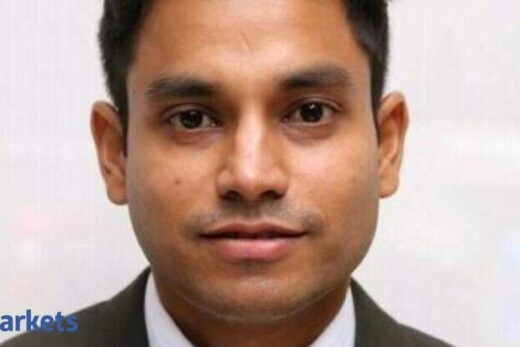The Federal Open Market Committee is all but certain to hold interest rates near zero at the conclusion of its two-day policy meeting on Wednesday, and repeat a vow to keep buying bonds at the current $120 billion monthly pace. The panel will release a statement and its forecasts at 2 p.m. in Washington and Powell will hold a press briefing 30 minutes later.
Expectations of a strong recovery from the Covid-19 slump are putting an intense focus on Fed officials’ projections for interest rates displayed in their “dot plot.” Two-thirds of economists surveyed by Bloomberg expect policy makers to continue to signal no liftoff from near-zero rates through 2023, though more of the 18 central bankers could drift their dots higher. In December, one policy maker predicted a 2022 hike and five saw at least one move by end-2023.
“The first thing I and most people will look at is whether we have one rate hike in 2023 — that is the main risk,” said Thomas Costerg, senior U.S. economist at Pictet Wealth Management. “That would represent an unraveling of the dovish line held by Powell up to now.”
New Governor Christopher Waller, a former St. Louis Fed research director and a likely policy dove, has joined the committee since the release of its December Summary of Economic Projections.
Here are some of the things to watch out for in the FOMC statement and Powell press conference on Wednesday:
Upgraded Forecasts
U.S. Treasury yields have risen in the past month as the economic outlook has improved. Private forecasters have sharply upgraded their estimates for growth, inflation and unemployment amid accelerating vaccinations and a fresh $1.9 trillion in fiscal stimulus, while investors have increased odds that the Fed will raise rates earlier than it previously signaled.
 Bloomberg
BloombergPolicy makers will probably upgrade their projections for expansion in gross domestic product this year to about 6 per cent to reflect the additional fiscal aid and improving outlook, according to economists surveyed by Bloomberg. Fed members may tweak inflation forecasts higher and leave the labor-market outlook little changed, according to the survey.
What Bloomberg Economics Says…
“Monetary policy makers remain firmly committed to the policy glide path they instituted in 2020 for both interest rates and asset purchases, even though the economic outlook has improved of late, particularly in response to the latest round of fiscal stimulus. Recent public comments signaled a willingness among Fed officials to tolerate a moderate rebound in interest rates as evidence of more optimistic economic sentiment among market participants.”
–Carl J. Riccadonna and Yelena Shulyatyeva, economists
“The Fed is set to give us a substantial upward revision for the economy,” said Michael Gapen, chief U.S. economist at Barclays Plc in New York. “You will hear the same message from Powell of how far we have to go with the labor market. The employment gap is still quite large.”
The inflation forecasts could give an indication of whether some committee members are embracing the FOMC’s strategy of overshooting 2 per cent price gains, based on whether they pencil in projections north of that number.
 Bloomberg
Bloomberg
FOMC Statement
While the statement will acknowledge an improving outlook, it’s unlikely to change the guidance on interest rates or asset purchases, economists said. The committee is likely to continue to describe financial conditions as “accommodative,” reflecting the view that rising yields are in response to a strengthening economy.
One possible change would be saying inflation “remains low but is expected to rise in the coming months due to higher energy prices and other transitory factors related to the recovery in demand,” said Brett Ryan, senior U.S. economist at Deutsche Bank AG. That would be dovish as “they want to see a sustained upward move in inflation, which will take time to assess as the economy reopens.”
Press Conference
Powell may push back gently against the rise in yields, repeating his view that he would be concerned by disorderly trading of Treasuries or a broader tightening in financial conditions. He may also downplay the significance of the dots, especially if they drift to show more officials are forecasting rate hikes.
“The chairman has an opportunity to expand on the Fed’s perception of recent market volatility and whether it is yet seen as disorderly — and if so, what the Fed plans to do about it,” said Lindsey Piegza, chief economist with Stifel Nicolaus & Co. in Chicago.
Powell’s handling of the recovery may be parsed not only by markets but by the White House. His term as chair ends in February, and he’s declined to say whether he is open to serving a second stint. Most economists expect President Joe Biden will make him the offer, according to the Bloomberg survey.
 Bloomberg
Bloomberg
IOER Move?
Economists say it’s possible the Fed could tweak its interest rate on excess reserves, currently 0.10 per cent. But such a move would be a technical adjustment that has no monetary-policy implications. Rather, it would be designed to help policy makers keep their benchmark federal funds rate within the target range. Most economists expect no move this meeting, however.



